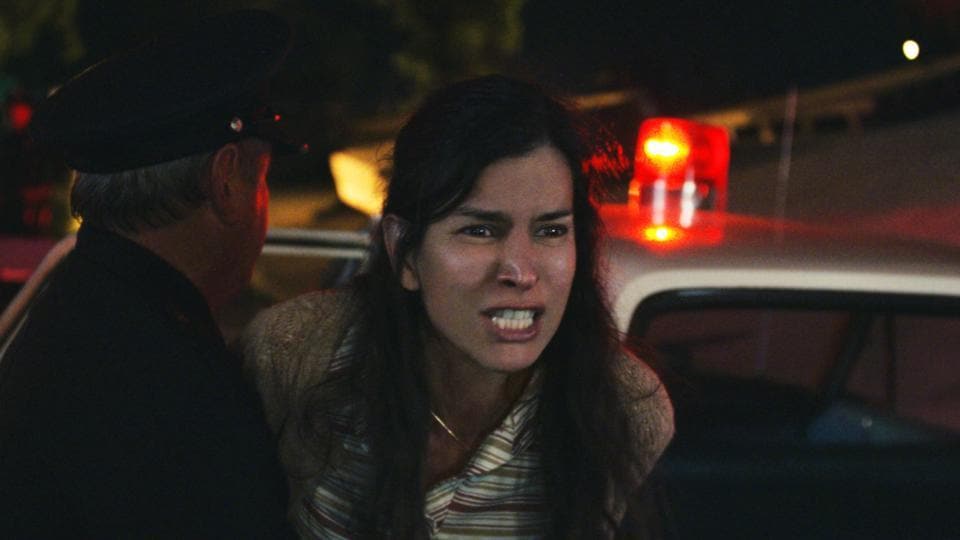

The story has developed over the years with people now saying she kidnaps children who look like her own little ones. Later she was dubbed La Llorona meaning the Weeping Woman and apparently roams near rivers, oceans, and bodies of water, but always after dark.

Some versions of the myths claim when she arrived at Heaven’s gates she was refused access and banished to Purgatory on Earth until she could find the children she killed. That very night the villagers hear a woman crying and it sounds like Maria’s voice asking “Where are my children?” An eerie figure in a long white robe, like Maria’s burial clothes, is seen walking along the riverbank. That’s not the end of the story though, it never is when it comes to spooky myths. She’s buried in the village the next day. Tormented by what she has done Maria drowns herself – some stories argue she died from grief. Maria runs down the riverbank, wailing: “Ay, mis hijos! ” which translates to ‘Oh, my children! or Oh, my sons!’ She desperately tries to rescue them but to no avail. She suddenly realises what’s she’s done and is filled with regret. Enraged by what she’s seen she throws the children into the river staring on as they drop into its murky depths. Then, one day when Maria was walking with her children she sees her husband with another woman. Her husband apparently began to spend less time at home, ignoring her but pouring his attention on the children. The pair have two children, but after a few happy years together, their marriage hits the rocks. The most common version of the La Llorona story begins with Maria, a beautiful, but vain woman who marries a very rich man. Buy The Curse of La Llorona on DVD and Blu-Ray.Have you watched The Curse of the Weeping Woman? Tell us in a comment below. "The family looked for footprints and finding none, had no doubt that the woman they had seen was La Llorona." "However, just moments later she re-appeared much closer to them and then disappeared again. She then seemed to float over the water, started up the hill, and vanished," writes Weiser. "As the family was sitting outside talking, they saw a tall, thin woman walking along the creek. They also say a man named Patricio Lugan once spotted the spirit at a creek between Mora and Guadalupita, New Mexico. "Many people who have been employed there tell of hearing cries resounding through the halls and feeling unseen hands pushing them while on the stairways," writes editor, Kathy Weiser. If you start asking around, you will be surprised."Ĭreepier yet, are the real life sightings of the ghost.Īccording to Legends of America, the "tall wailing spirit" of La Llorona continues to haunt the PERA Building (Public Employees Retirement Association) in Santa Fe, New Mexico, which is said to have been built on a Spanish-Indian graveyard near the Santa Fe River. "I had someone the other day tell me that La Llorona touched her shoulder. And La Llorona, this is how Mum got us to make sure we would come back at five, it gets dark, you're inside. Speaking to Entertainment Tonight, one of the film's stars, Patricia Velasquez, who plays Anna - a mum who loses her children to the curse of La Llorona- says the legend is very much alive. Other interpretations say people hear the cries of La Llorona shortly before they die themselves. Some say the ‘wailing woman in white’ can be heard saying “mis hijos” (my children), while looking for other kids to kill to exchange them for her own. In another version, La Llorona drowns herself in the river immediately after she realises her sons are dead.ĭespite the variations, the story of La Llorona is still told to scare misbehaving children today. While others say she killed her sons in a fit of jealousy and spite because her husband continually paid more attention to them. Some versions paint her to be a neglectful mother who left her children to dance and flirt with men and one night came home to find her sons drowned. There are a few other interpretations of La Llorona. In a fit of rage she drowned both her sons in the river, but once she realised her mistake she became inconsolable and spent the rest of her life searching for her sons along the bank, wailing and crying, before she perished too. One day, Maria was walking along the river with her children when she saw her husband with a younger woman. Initially they were in love and shared two sons, however he soon became distant. Taking place in Aztec times, La Llorona was said to be a beautiful peasant woman named Maria who married a wealthier man.


 0 kommentar(er)
0 kommentar(er)
